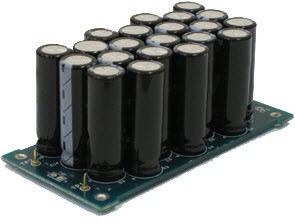
Super Capacitor Battery
Battery Charger is an electronic device that can be used to re-energize a “Secondary Cell” or a “Rechargeable Battery” using a power supply source.
Generally battery chargers can be consider as “DC Power Supply Source”, step-up/down transformers will be used to regulate the voltage of AC mains input, to the required levels based on the transformer rating.Most of the batteries require a high current output produced by high power type Transformer Bridge rectifier configuration will be used to convert low voltage AC into DC; This Direct Current will be smoothed with the help of high value electrolytic capacitors and fed to batteries with constant voltage level, by means a voltage regulating electronic circuit. There are different types of batteries: Dumb chargers, timer chargers, smart chargers.
Super Capacitor
Basically capacitors are passive devices that are capable of drawing, storing, and releasing energy, in a circuit and are possible by means of providing the potential difference to two conductors which were separated by an insulating dielectric, thus electric field will be created and electric charges will be stored. Whenever the potential difference is removed from those two electrodes and if were connected, then the stored charge or current will flow to neutralize the electric field or potential difference.
We can consider capacitors as a conductor for AC and will act like an insulator in DC. Capacitors with a very high energy density can be considered as “Super Capacitors”. The Simple difference between these Electrolyte Capacitor and Super Capacitor is the number of layers used. Normally capacitors use single dielectric material, whereas Super capacitors use two layers which were separated by a dielectric medium. This Electric Double Layer Capacitor Effect was identified in 1957.
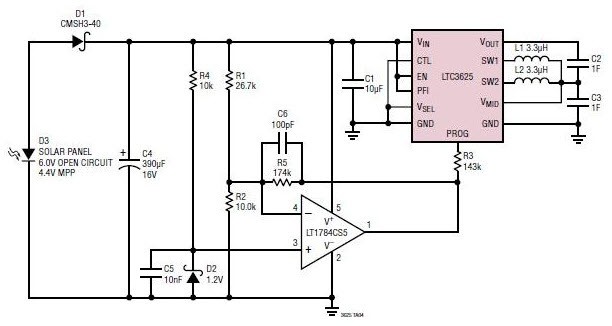
Circuit Diagram of Super Capacitor
Super Capacitors also known as “Electric Double-Layer Capacitor” (EDLC) or “Ultra Capacitor”. Super Capacitor will have very height capacitance values and will not have any conventional solid dielectric, instead of that an electrolyte (solid or liquid) will be used to create medium between the two electrodes this will work as a dielectric. There are three variants are there in “Super Capacitors”, based on “Electrode Design”.
- Double-layer capacitors – Will have carbon electrodes
- Pseudo Capacitors – Will have conducting polymer electrodes
- Hybrid capacitors – capacitors with asymmetric electrodes
Super capacitors can store maximum energy per unit volume over capacitors, these can store up to 10000 farads/ 1.2volts, but the power density is noticeably less. This is around 10% of regular conventional batteries, this is the major cause for many number of charge and dis-charge cycles over conventional batteries.
Super Capacitors must be operated with proper polarity as they are polarized. Polarity can be controlled by design for asymmetric electrodes and will be controlled by potential applied, at the time of manufacture for symmetric electrodes.
Advantages of Super Capacitors
- These will have high energy storage capacity when compared with conventional capacitors.
- With the help of porous activated carbon electrode which can achieve a high surface tension, these ultra / super capacitors possesses orders of magnitude higher energy density.
- Generally ESR (Equivalent Series Resistance) is less for EDLCs. Because of low internal resistance, power density capability is high.
- Current flow in EDLCs will occur by means of “Absorption and Release” of ions and also cause of low ESR, high current charging and discharging is possible with less or negligible damage of parts.
- Overcharging will never affect.
- Long cycle and calendar life is possible.
- Impedance is low.
Of course, as like all phenomenon’s these also have disadvantages.
- The Self-discharging rate is high.
- Cause of limited typical voltage per cell, i.e. 2.7V, cell balancing is required, that means needs to adopt a series connection of cells to fulfill higher voltage requirements.
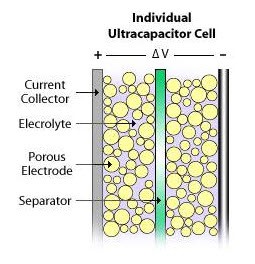
Individual Ultra Capacitor Cell Diagram
- These cannot be adopted for “High Frequency Circuits” or AC circuits, because its time constant wont suits for them.
These cannot be adopted for “High Frequency Circuits” or AC circuits, because its time constant wont suits for them.Super Capacitor Applications require a short duration power boost. And are extensively used in memory functions like power backup, most probably consumer products like mobile phones, laptops, and radio tuners requires these super capacitors.Super Capacitors plays a crucial role for Energy Storing in “Solar Panels and Motor Starters”.
Super capacitors as batteries
We aware that batteries and capacitors both can do a similar job, but the way that they work is completely different. Capacitors can store electrical energy, but when it comes to discharge/usage, they discharge all of their energy in a single flash, unlike capacitors, super capacitors can store energy as well they can discharge gradually, that’s how they can work like a battery without life problem, in addition to that super capacitors can be charged in seconds for many cycles. This is how the super capacitors can work like a rechargeable battery.
Super capacitor battery charger
Super Capacitors will be used in parallel with the batteries and pulsed load. An active circuit components will be used to achieve required performance and efficiency and of course it should be capable of handle perfectly on varying loads also.We need to consider the following points, while we design Super capacitor rechargeable battery.
- A Battery that is capable of providing the required power up to required/expected time.
- Super capacitor that can provide pulse power.
- Circuit configuration or a hybrid structure of the super capacitor and battery as required, based on load.
- Design and build a programmable load to simulate the pulsating load.
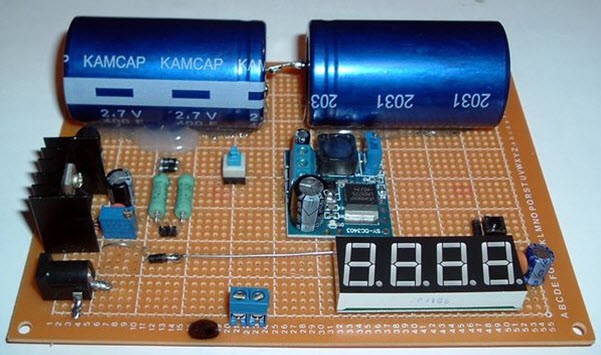
Super Capacitor Battery Charger
Solar Power Charge Controller
Solar charger also works as a rechargeable battery.The solar energy is converted to electrical energy by photo-voltaic cells. This energy is stored in batteries during day time for utilizing the same during night time. This project deals with a controlled charging mechanism which overcharge, deep discharge and under voltage of the battery.
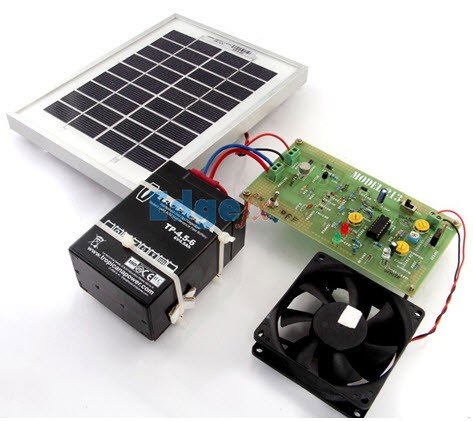
Solar Power Charge Controller Project Kit
In this project a solar panel is used to charge a battery. A set of op-amps are used as comparators to continuously monitor panel voltage, load current etc. Indications are also provided by a green LED for fully charged battery while a set of red LEDs to indicate under charged, overloaded and deep discharge condition.
Solar Charge controller also uses MOSFET as a power semiconductor switch to ensure cut off the load in low battery or overload condition. A transistor is used to bypass the solar energy to a dummy load while the battery gets fully charged. This protects the battery from getting over charged.
Further, the project can be enhanced by using a microcontroller and GSM modem to communicate the status of the system to a control room via SMS.
Industrial Battery Charger
Industrial Battery Charger by Thyristor firing angle control is an application in which batteries can be charged by DC from AC power supply. Thyristor controlled rectifier system is used for deriving DC power for charging batteries.
The Comparator is used to detect zero-crossing points of the waveform and thus comparator output is given to the microcontroller. An Optoisolator is used as an interface between triac and microcontroller. Hence, rectified and controlled DC power is fed to load through triac. In this project, a resistor is used in place of battery for demonstration purposes.
This is all about rechargeable supercapacitor battery which is used to re-energize a secondary cell using a power supply source. Furthermore, any queries regarding this article give your feedback by commenting in the comment section below.
Photo Credits:
- Super Capacitor Battery icd-sales
- Super Capacitor Circuit Diagram electroniccircuitsdesign
- Individual Ultracapacitor Cell tecategroup
- Super capacitor battery charger instructables